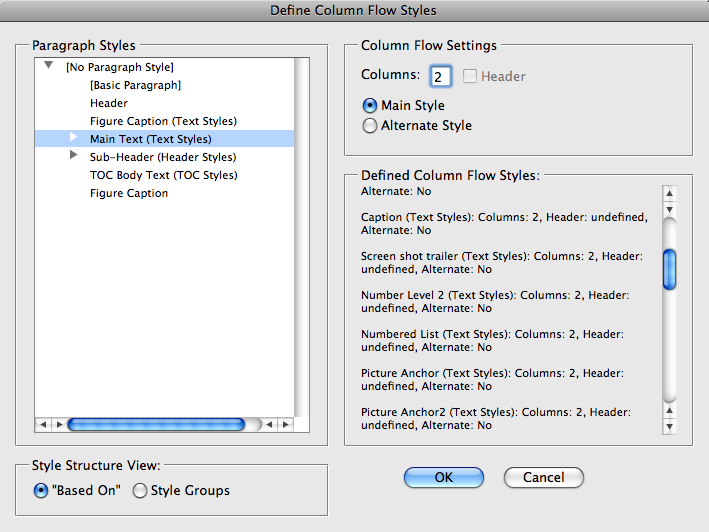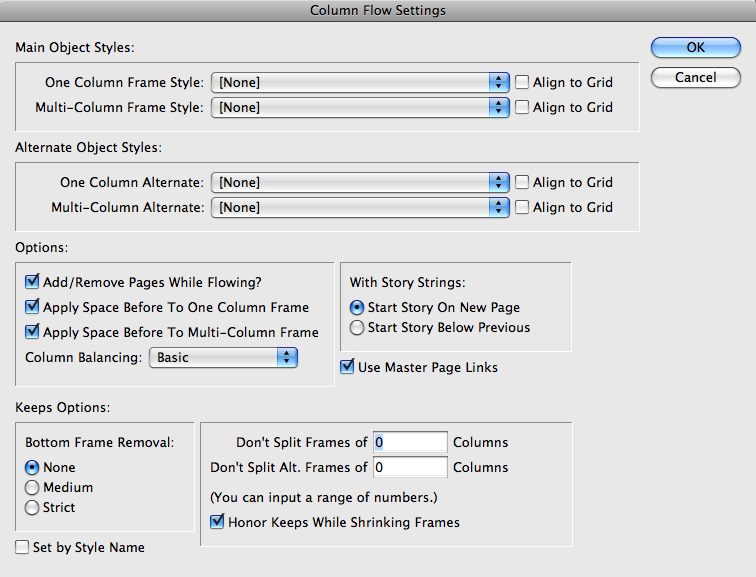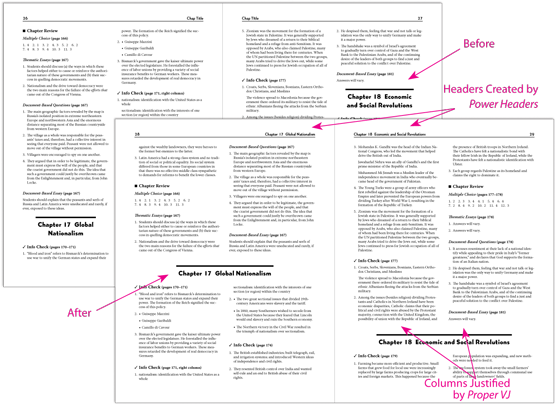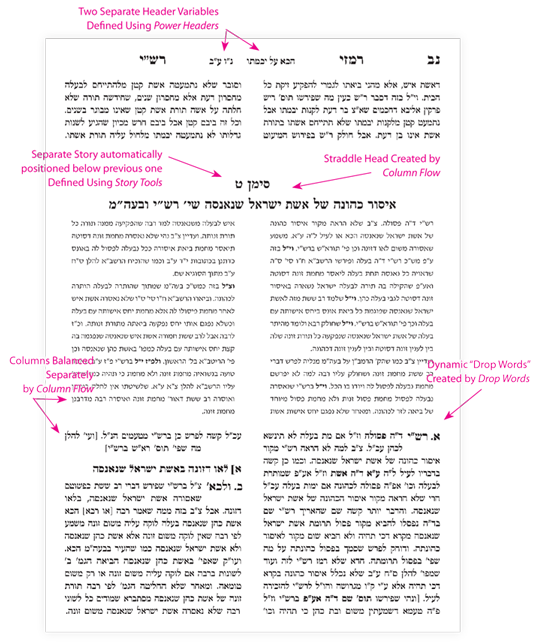In a recent post we kind of slipped in a whole bunch of improvements. The biggest one is probably Column Flow.
The most obvious improvement is the way settings are set. In previous version of Column Flow, the column settings had to be set by changing the style names. Now column settings can be set using a much more intuitive dialog:
But beyond that, there’s a whole pile of tricks that you can now do with Column Flow that was not possible before. Just to illustrate some of the improvements, we will show the previous configuration dialog followed by the new one:
However to really appreciate what Column Flow can do for you we’re going to discuss the Span Columns feature of CS5 a bit.
When we first learned about the Span Columns feature of CS5, we had some real doubts about updating Column Flow for CS5 compatibility. Span Columns is the feature that people have been asking for years, and we developed Column Flow to fill that need. Now with Span Columns, Column Flow is no longer needed. Or so we thought…
After studying Span Columns however, we came to a very different conclusion. In our opinion, the Span (and Split) Columns feature is perfect for newspaper and advertisement layout. For long-document layout however, we believe it falls short of being the needed solution. Here’s why:
- Span Columns works dynamically. This is great, you say. Right? Well for short articles, yes it is. But for long stories? Not so much. Very long stories can have quite a few column breaks along the way. Even with the incredible job the engineers at Adobe did to optimize the code of breaking the columns, it can be very processor intensive, and editing text at the beginning of a long story can quickly become a very tedious job! Additionally, dynamically created column spanners can be very difficult to adjust. To change the spacing on specific pages would require paragraph-style overrides (if it can be done), which makes the file error prone.
- Span and Split Columns gives very little control over keeps options, and very often keeps are completely ignored to prevent columns from having no text. This can make flowing text correctly extremely difficult!
- Trying to use Span Columns to create a section of text which will always stay together (i.e. keep all paragraphs together) is virtually impossible. InDesign does not have the ability to leave a text column empty. To force a whole section of text to the next page would require manually resizing the text frame — which defeats the whole point of Span/Split Columns.
- There’s no way to ensure that a section of text starts on the baseline grid. You need to set the paragraph style to Align to Grid. This is not a solution which will work for headings which must be aligned to grid only at the top of a column.
- There’s no column-balancing functionality included in Span/Split Columns. If it balances, good. If not? Try to balance it yourself.
- Span Columns only helps within a single story. There’s no way to do cross-story spanning.
- Span Columns does not supply a solution for boxed sections of text.
- Because Span Columns uses one text frame for all the text, transparency settings cannot be applied to headings.
Column Flow addresses all these issues:
- Column Flow does not work dynamically, and we believe that for long documents this apparent disadvantage is really a plus!
- Column Flow gives very precise control over keeps with three different levels of strictness to give you your preferred balance between type-fitting and adherence to keeps rules.
- Column Flow gives an option to keep specific numbers of columns together as a unit, so it will not break across pages.
- Column Flow gives precise control over whether text sections are snapped to the baseline grid. This ensures proper alignment of heading text which is normally not baseline aligned.
- While Column Flow will not balance columns in every situation, Column Flow does performs more column balancing than Span Columns. It can even make pages one line long or short if necessary to balance the columns.
- Column Flow can create spanned headings even across different stories when the Story Tools plugin is used to set up Story Strings.
- Column Flow allows for boxed sections to be created with a border or background.
- Because Column Flow creates a separate text frame for each section, transparency effects can be applied automatically to headings specifically.
Additionally:
- When Column Flow is used in conjunction with AutoFlow Pro, master pages can be automatically applied.
Right now, Column Flow can be downloaded as part of the Layout Tools package here.
Full information on the plug-in may be found in the manual here.
Here are some screen-shots displaying some of the advanced functionality of Column Flow, with and without other In-Tools plug-ins included in the InBook plug-in package:
Tags: Column Flow, InDesign, Plugins, Span Columns






I’m long time waiting for the promised autoflow tutorial videos and other in book plugins.
I’m portuguese and have some problems understanding how things work just reading the manuals.
Tks in advance
md
Yes. We really would like to get out some tutorials. It has not happened as quickly as we’d like. It’s something we are working on…
Thanks for the interest!
[…] at In-Tools.com has updated Column Flow. His blog post about it is interesting because he goes into details about why CS5’s span […]